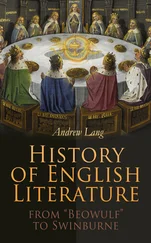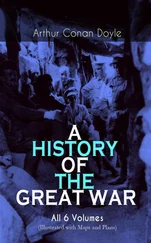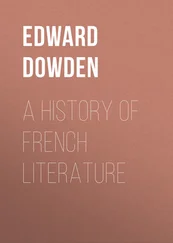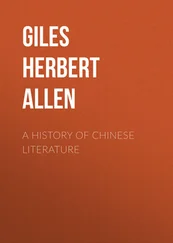Arthur Anthony MacDonell - A History of Sanskrit Literature
Здесь есть возможность читать онлайн «Arthur Anthony MacDonell - A History of Sanskrit Literature» — ознакомительный отрывок электронной книги совершенно бесплатно, а после прочтения отрывка купить полную версию. В некоторых случаях можно слушать аудио, скачать через торрент в формате fb2 и присутствует краткое содержание. Жанр: foreign_prose, foreign_antique, на английском языке. Описание произведения, (предисловие) а так же отзывы посетителей доступны на портале библиотеки ЛибКат.
- Название:A History of Sanskrit Literature
- Автор:
- Жанр:
- Год:неизвестен
- ISBN:нет данных
- Рейтинг книги:5 / 5. Голосов: 1
-
Избранное:Добавить в избранное
- Отзывы:
-
Ваша оценка:
- 100
- 1
- 2
- 3
- 4
- 5
A History of Sanskrit Literature: краткое содержание, описание и аннотация
Предлагаем к чтению аннотацию, описание, краткое содержание или предисловие (зависит от того, что написал сам автор книги «A History of Sanskrit Literature»). Если вы не нашли необходимую информацию о книге — напишите в комментариях, мы постараемся отыскать её.
A History of Sanskrit Literature — читать онлайн ознакомительный отрывок
Ниже представлен текст книги, разбитый по страницам. Система сохранения места последней прочитанной страницы, позволяет с удобством читать онлайн бесплатно книгу «A History of Sanskrit Literature», без необходимости каждый раз заново искать на чём Вы остановились. Поставьте закладку, и сможете в любой момент перейти на страницу, на которой закончили чтение.
Интервал:
Закладка:
The chief purpose of the Brāhmaṇas is to explain the mutual relation of the sacred text and the ceremonial, as well as their symbolical meaning with reference to each other. With the exception of the occasional legends and striking thoughts which occur in them, they cannot be said to be at all attractive as literary productions. To support their explanations of the ceremonial, they interweave exegetical, linguistic, and etymological observations, and introduce myths and philosophical speculations in confirmation of their cosmogonic and theosophic theories. They form an aggregate of shallow and pedantic discussions, full of sacerdotal conceits, and fanciful, or even absurd, identifications, such as is doubtless unparalleled anywhere else. Yet, as the oldest treatises on ritual practices extant in any literature, they are of great interest to the student of the history of religions in general, besides furnishing much important material to the student of Indian antiquity in particular.
It results from what has been said that the contrasts between the two older phases of Vedic literature are strongly marked. The Vedas are poetical in matter and form; the Brāhmaṇas are prosaic and written in prose. The thought of the Vedas is on the whole natural and concrete; that of the Brāhmaṇas artificial and abstract. The chief significance of the Vedas lies in their mythology; that of the Brāhmaṇas in their ritual.
The subject-matter of the Brāhmaṇas which are attached to the various Vedas, differs according to the divergent duties performed by the kind of priest connected with each Veda. The Brāhmaṇas of the Rigveda , in explaining the ritual, usually limit themselves to the duties of the priest called hotṛi or “reciter” on whom it was incumbent to form the canon ( çastra ) for each particular rite, by selecting from the hymns the verses applicable to it. The Brāhmaṇas of the Sāma-veda are concerned only with the duties of the udgātṛi or “chanter” of the Sāmans; the Brāhmaṇas of the Yajur-veda with those of the adhvaryu , or the priest who is the actual sacrificer. Again, the Brāhmaṇas of the Rigveda more or less follow the order of the ritual, quite irrespectively of the succession of the hymns in the Veda itself. The Brāhmaṇas of the Sāma- and the Yajur-veda , on the other hand, follow the order of their respective Vedas, which are already arranged in the ritual sequence. The Brāhmaṇa of the Sāma-veda , however, rarely explains individual verses, while that of the Yajur-veda practically forms a running commentary on all the verses of the text.
The period of the Brāhmaṇas is a very important one in the history of Indian society. For in it the system of the four castes assumed definite shape, furnishing the frame within which the highly complex network of the castes of to-day has been developed. In that system the priesthood, who even in the first Vedic period had occupied an influential position, secured for themselves the dominant power which they have maintained ever since. The life of no other people has been so saturated with sacerdotal influence as that of the Hindus, among whom sacred learning is still the monopoly of the hereditary priestly caste. While in other early societies the chief power remained in the hands of princes and warrior nobles, the domination of the priesthood became possible in India as soon as the energetic life of conquest during the early Vedic times in the north-west was followed by a period of physical inactivity or indolence in the plains. Such altered conditions enabled the cultured class, who alone held the secret of the all-powerful sacrifice, to gain the supremacy of intellect over physical force.
The Brāhmaṇas in course of time themselves acquired a sacred character, and came in the following period to be classed along with the hymns as çruti or “hearing,” that which was directly heard by or, as we should say, revealed to, the holy sages of old. In the sphere of revelation are included the later portions of the Brāhmaṇas, which form treatises of a specially theosophic character, and being meant to be imparted or studied in the solitude of the forest, are called Āraṇyakas or “Forest-books.” The final part of these, again, are philosophical books named Upanishads , which belong to the latest stage of Brāhmaṇa literature. The pantheistic groundwork of their doctrine was later developed into the Vedānta system, which is still the favourite philosophy of the modern Hindus.
Works of Vedic “revelation” were deemed of higher authority in cases of doubt than the later works on religious and civil usage, called smṛiti or “memory,” as embodying only the tradition derived from ancient sages.
We have now arrived at the third and last stage of Vedic literature, that of the Sūtras. These are compendious treatises dealing with Vedic ritual on the one hand, and with customary law on the other. The rise of this class of writings was due to the need of reducing the vast and growing mass of details in ritual and custom, preserved in the Brāhmaṇas and in floating tradition, to a systematic shape, and of compressing them within a compass which did not impose too great a burden on the memory, the vehicle of all teaching and learning. The main object of the Sūtras is, therefore, to supply a short survey of the sum of these scattered details. They are not concerned with the interpretation of ceremonial or custom, but aim at giving a plain and methodical account of the whole course of the rites or practices with which they deal. For this purpose the utmost brevity was needed, a requirement which was certainly met in a manner unparalleled elsewhere. The very name of this class of literature, sūtra , “thread” or “clue” (from siv , “to sew”), points to its main characteristic and chief object—extreme conciseness. The prose in which these works are composed is so compressed that the wording of the most laconic telegram would often appear diffuse compared with it. Some of the Sūtras attain to an almost algebraic mode of expression, the formulas of which cannot be understood without the help of detailed commentaries. A characteristic aphorism has been preserved, which illustrates this straining after brevity. According to it, the composers of grammatical Sūtras delight as much in the saving of a short vowel as in the birth of a son. The full force of this remark can only be understood when it is remembered that a Brahman is deemed incapable of gaining heaven without a son to perform his funeral rites.
Though the works comprised in each class of Sūtras are essentially the same in character, it is natural to suppose that their composition extended over some length of time, and that those which are more concise and precise in their wording are the more recent; for the evolution of their style is obviously in the direction of increased succinctness. Research, it is true, has hitherto failed to arrive at any definite result as to the date of their composition. Linguistic investigations, however, tend to show that the Sūtras are closely connected in time with the grammarian Pāṇini, some of them appearing to be considerably anterior to him. We shall, therefore, probably not go very far wrong in assigning 500 and 200 B.C. as the chronological limits within which the Sūtra literature was developed.
The tradition of the Vedic ritual was handed down in two forms. The one class, called Çrauta Sūtras , because based on çruti or revelation (by which in this case the Brāhmaṇas are chiefly meant), deal with the ritual of the greater sacrifices, for the performance of which three or more sacred fires, as well as the ministrations of priests, are necessary. Not one of them presents a complete picture of the sacrifice, because each of them, like the Brāhmaṇas, describes only the duties of one or other of the three kinds of priests attached to the respective Vedas. In order to obtain a full description of each ritual ceremony, it is therefore needful to supplement the account given by one Çrauta Sūtra from that furnished by the rest.
Читать дальшеИнтервал:
Закладка:
Похожие книги на «A History of Sanskrit Literature»
Представляем Вашему вниманию похожие книги на «A History of Sanskrit Literature» списком для выбора. Мы отобрали схожую по названию и смыслу литературу в надежде предоставить читателям больше вариантов отыскать новые, интересные, ещё непрочитанные произведения.
Обсуждение, отзывы о книге «A History of Sanskrit Literature» и просто собственные мнения читателей. Оставьте ваши комментарии, напишите, что Вы думаете о произведении, его смысле или главных героях. Укажите что конкретно понравилось, а что нет, и почему Вы так считаете.












